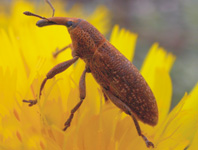Abstract
Two new species of tardigrades are described from Sicilian moss samples: Macrobiotus insuetus sp. nov. and Diphascon (Diphascon) procerum sp. nov.
Macrobiotus insuetus sp. nov. is a species of the harmsworthi-group characterized by both posterior and anterior claws of the hind legs, which are different in shape from those of the first three leg pairs. The IV claws have extended basal tract where the branches are joined and the secondary branch breaks at near right angle to the primary branch and is clearly shorter than the main branch and the secondary branch of claws I-III. The eggs are not areolated and have conical processes with a reticular ornamentation.
Diphascon (D.) procerum sp. nov. has a delicate cuticular ornamentation of very small tubercles, almost dots; two macroplacoids and septulum are present; thin accessory points are present on the main branches of the slender claws; lunules are absent but the base of the external claws of the hind legs are enlarged and slightly indented; a cuticular bar is present near the internal claw of the first three leg pairs and two cuticular bars are present on the hind legs between the base of the claws and near the base of the anterior claw.

